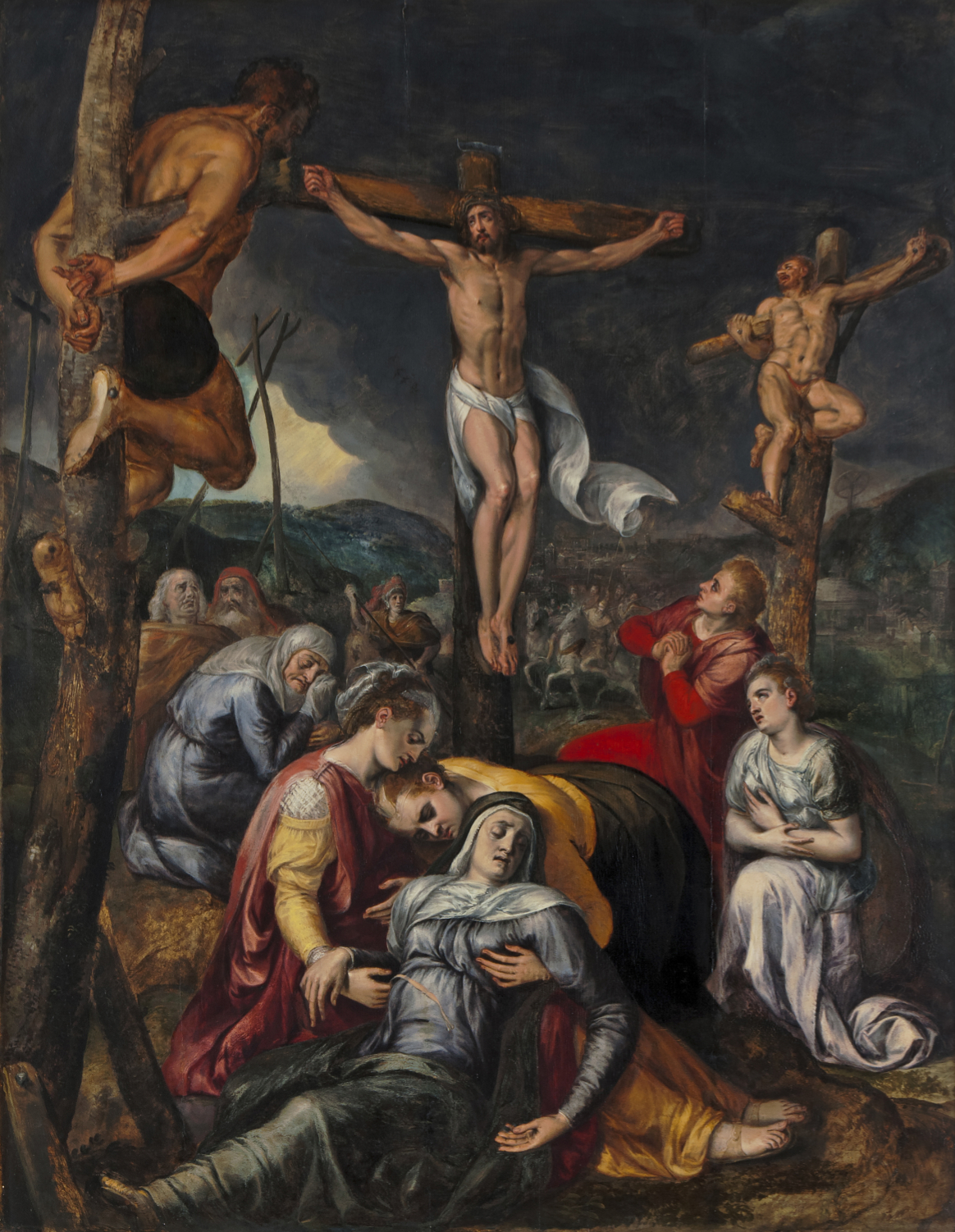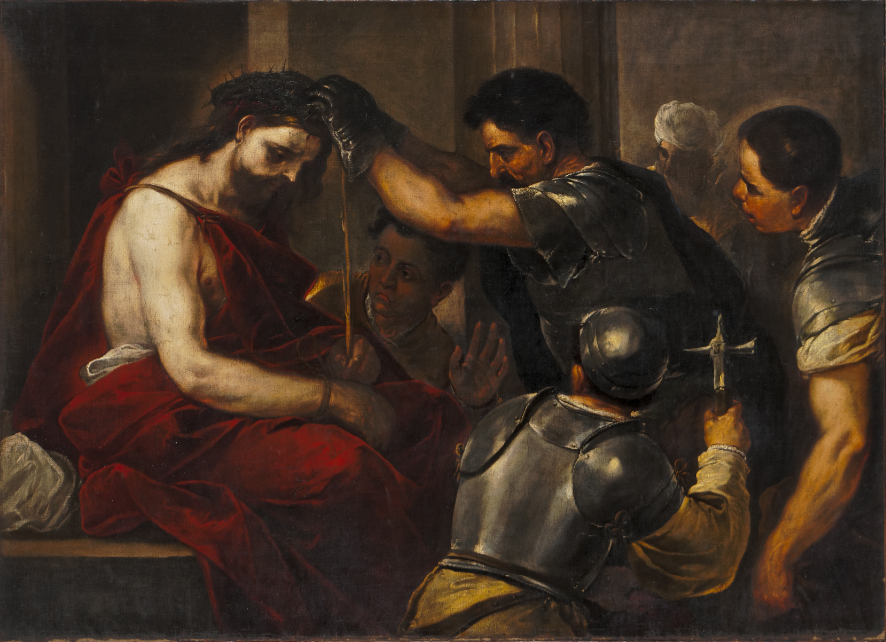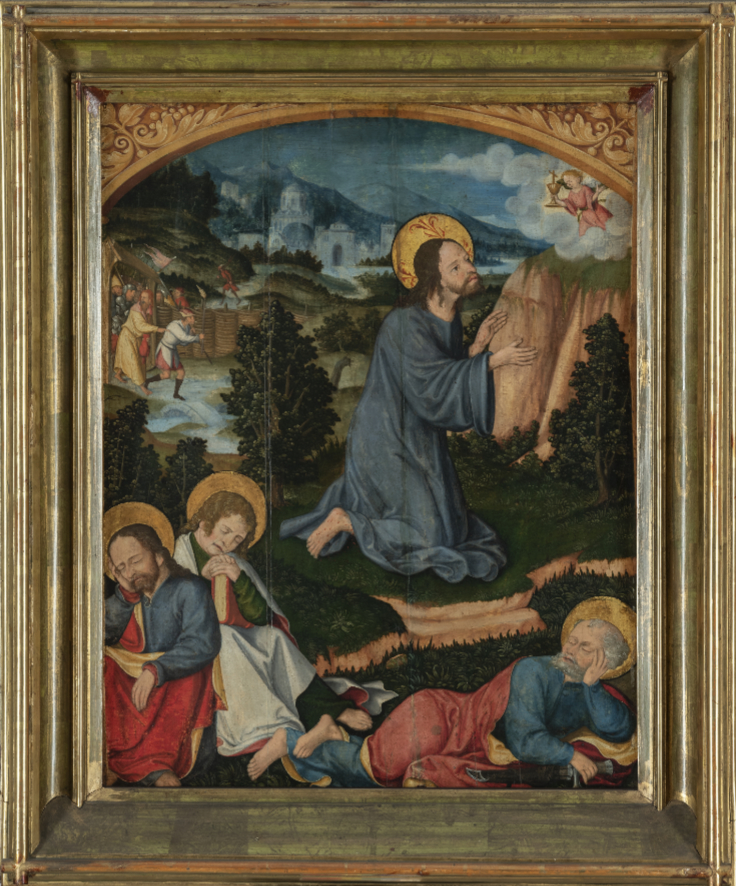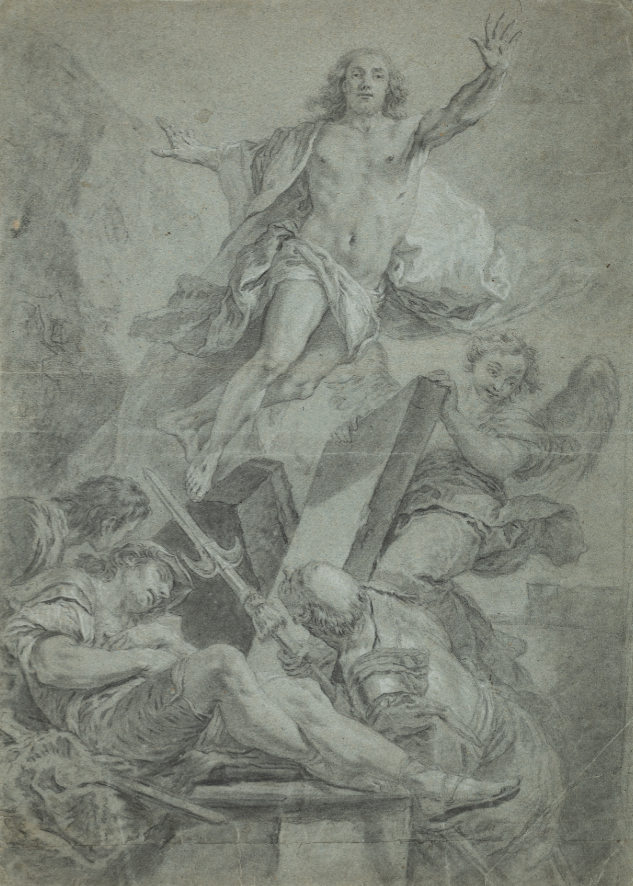Easter Walk
EXHIBITIONS
Director Dr. Andreas Henning guides you through several epoques of history of art.
The museum’s doors are firmly locked. In times of the COVID-19 pandemic, visitors are now barred from coming within viewing distance of either the objects in our Art Collections or specimens from the Natural History Collections and are thus unable to see the originals ‘in the flesh’. And, despite all claims to the contrary, no book, no online virtual tour, no blog, no Tweet, and no Instagram post comes close to replacing the direct encounter with exhibits in real space. That said, however, all of the above do have the power to arouse and sustain would-be visitors’ curiosity and interest. Which is precisely why we’ve launched the new MuWi Blog.
And we’d like to start things off by taking you on an Easter walk.
So come along!
Our Easter walk through Museum Wiesbaden leads past four works of art depicting key moments in the Passion of Christ. The walk may be short, but we’ll pass through several centuries along the way, because translating the Scriptures into pictorial scenes was, for many hundreds of years, a matter of course for artists, irrespective of whether they were active in the Middle Ages, the Renaissance, or, later, the Baroque. Every artist strove to make the biblical stories familiar to him through scripture from an early age relatable and manifest through his art, whether in painting, sculpture, drawing, or printmaking.
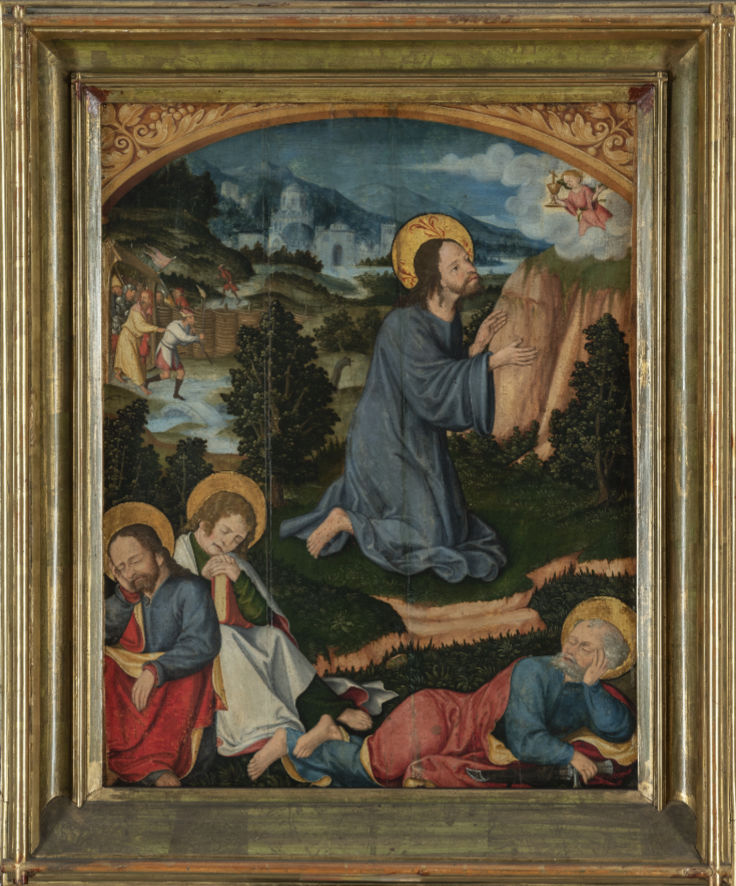
Let’s begin our Easter walk with an event on the Mount of Olives which, according to the Gospels, took place on Maundy Thursday, the day before Easter. This scene was painted by a southern German painter whose exact name remains the subject of art-historical conjecture. Stylistically, we can date it to sometime around 1520. It is one panel from a Passion cycle.
The picture shows a deep view of a landscape with the city of Jerusalem in the background, which is where Christ celebrated the Last Supper with his disciples before leaving the city to visit the Garden of Gethsemane at the foot of the Mount of Olives. The compositional structure makes it clear that Christ is the main figure of the scene. He kneels on the grass, head and hands raised towards an angel who has appeared in the clouds. Conscious of his impending crucifixion, Christ prays to God the Father. As written in the Bible, drops of blood trickle like beads of sweat from Christ’s pores as he wrestles with himself and his gruesome fate. His gaze is fixed on the chalice in the angel’s hand. Unusually for this pictorial topos, the painter has placed a cross in this chalice to underscore the gravity of the scene. It is a visual reference to the prayer Christ utters at this moment: ‘Father, if thou be willing, remove this cup from me: nevertheless not my will, but thine, be done’ (Luke 22:42). The artist thus depicts the moment when Christ gives his consent to divine will and thereby accepts his role in salvation history and his fate to die on the cross. The greatness of this act is made visible by the contrast with the three disciples Peter, James, and John, who are unable to stand by Christ at this pivotal moment and instead have fallen into a deep sleep. The action in the background already foretells the next scene in the narrative: Judas is just entering the garden with a huddle of soldiers and will betray Christ to get his thirty pieces of silver.
Before we move on to the second scene on our walk, I’d like to draw your attention to the fact that, despite its implicit drama, this panel is infused with the sense of harmony and balance that characterizes Renaissance art. The next stop on our walk is startlingly different.
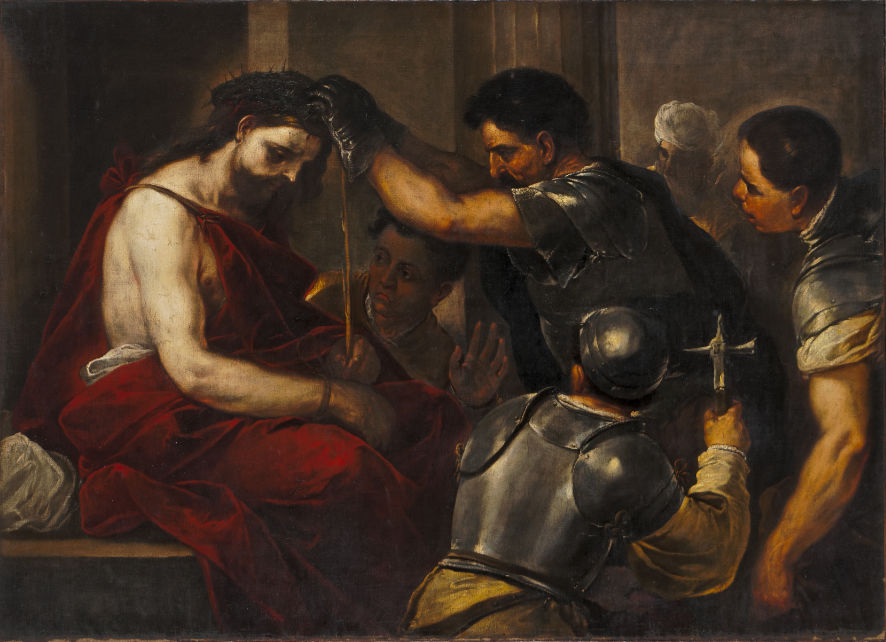
Christ Crowned with Thorns is manifestly a work of the Baroque. Painted by the Italian Luca Giordano (1634–1705), it displays a dramatic lighting strongly indebted to Caravaggio and a rendering of the figure and flesh that is shockingly real. The painting vividly shows us the mockery and torment of the Son of God. After his capture on the Mount of Olives, he was flagellated and humiliated by the soldiers and brought before the Roman governor Pontius Pilate for interrogation. The soldiers have slung a scarlet robe around him, have forced him to clench a reed in place of a sceptre, and are just this moment placing a crown of thorns on his head, in bitter mockery of his kingship and role as ‘king of the Jews’. Giordano makes Christ’s awful humiliation drastically clear. In his deft handling of the narrative source, Giordano has pared the dramatic events down and chosen to focus on the motif of the crown of thorns being pressed into place. How calmly the henchman carries out this act of torture, applied with such careful precision. And how unbearably sharp must those thorns be as they pierce Christ’s skin, if the torturer himself requires such thick gloves in handling them. To use a modern term, you’d have to describe this scene as one enacted in slow motion – which of course sounds paradoxical in the case of a painting. But the artist does his utmost to capture the humility with which Christ endures his torment. Christ’s calm acceptance of his suffering illustrates his acceptance of his role as the necessary saviour of humankind. Giordano paints a figure that may be motionless but is far from passive and he endows Christ’s suffering frame with immense inner strength.
In this work we encounter an emotionally charged pictorial language. With it, Baroque artists sought to draw out and challenge the viewer’s feelings with the greatest intensity possible. Baroque artists did not want their pictures to just be visually pleasing and for the audience to experience a mere moment’s contemplation in their viewing. These artists wanted to go further and arouse equally strong emotions in their viewers, so that what they saw would leave such a profound impression on their minds as to become a lasting source of stirring inner agitation.
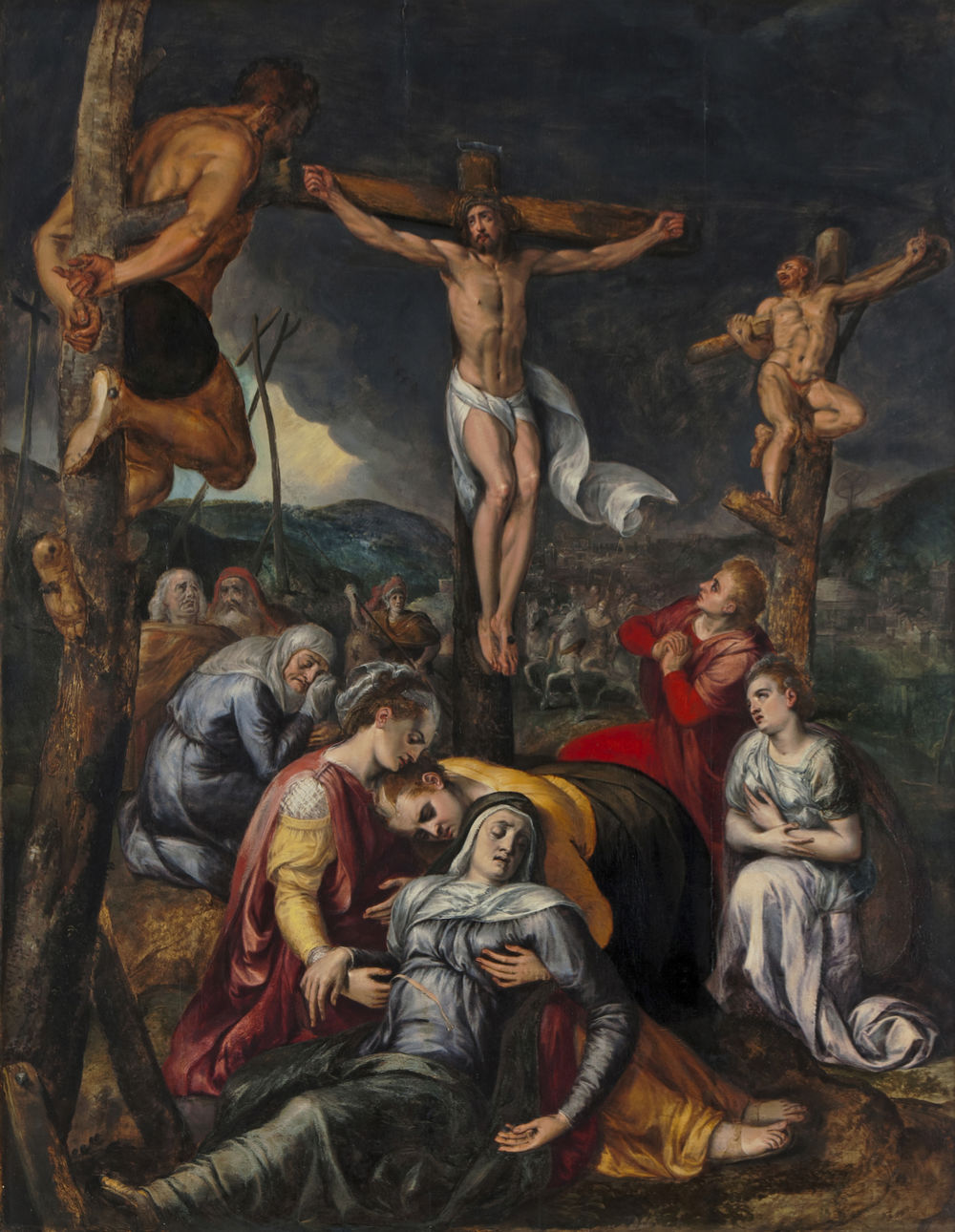
Our next stop falls into the period between the Renaissance and Baroque. This painting is a Crucifixion painted in Antwerp by Frans Floris (1515/20–1570). He was often dubbed the ‘Flemish Raphael’ and so we couldn’t possibly leave him out this year, the 500th anniversary of Raphael’s death, with its many Raphaelite celebrations. The sobriquet of the ‘Flemish Raphael’ stems from the fact that Floris had spent several years in Italy, which left a palpable impact on his painting manner after his return to the Low Countries. The Wiesbaden panel shows Christ on the cross, flanked by the two thieves who were crucified at the same time. The drama of the scene as told in the gospels is vividly portrayed here. The masterful lighting of the scene emphasizes the body of Christ. The reactions of the figures at the bottom of the picture are just as haunting as the crucifixion above. The Mother of Christ has fainted to the floor. Two of the mourning women mentioned in the Bible attend to her, while John the disciple is on his knees, wringing his hands below the cross.
Such narrative broadening of the crucifixion scene is typical of Mannerism. And to create the necessary space for this, Floris has placed the crosses on a diagonal. This narrative ‘sideshow’ provides several possibilities for viewers to enter the story, transporting them to the scene of the Passion.
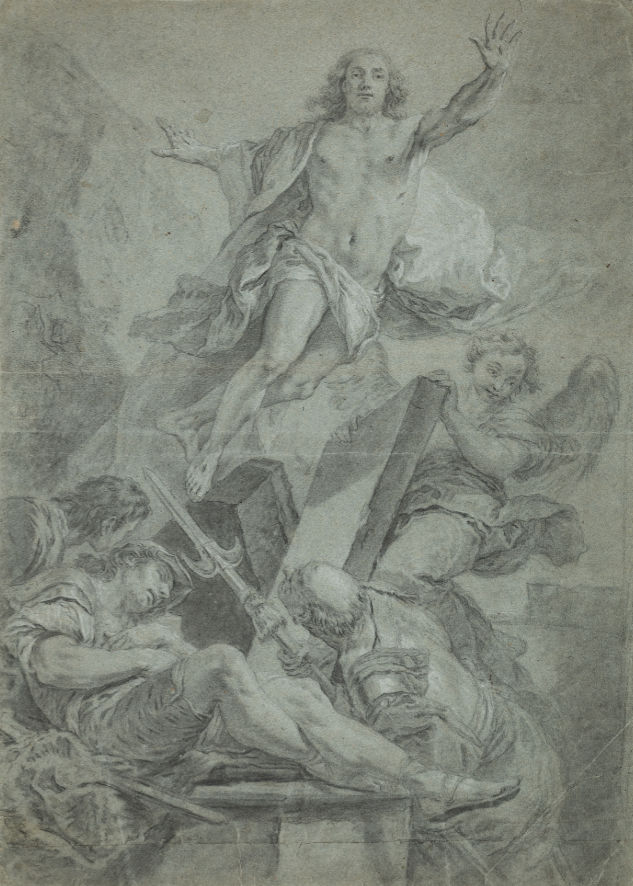
The last stop on our Easter walk is a drawing. Due to its fragile state and light-sensitive materials, it is kept in storage and not on display. With it we find ourselves in the late Baroque. This is a work by the German artist Januarius Zick (1730–1797). Although a drawing, it is worked up like a painting and shows Christ’s resurrection on Easter Sunday. The dynamism of this event is evident in Christ’s entire posture and visually underscored by the billowing fabric. Christ’s overcoming of earthly laws is heightened by the stone block, shown askew, and the opened tomb slab. In powerful contrast to this upward motion, three helpless guards are arranged along a horizontal axis below, looking up at the sovereign figure of Christ. One of the soldiers is still sound asleep. The bald guard with lance in hand can only stare slack-jawed at the sight of the rising Son of God, while the third stares into the gaping tomb.
As a late Baroque artist, Januarius Zick also seeks to draw out an emotional response in the viewer. Like the other three works on our Easter walk – as stylistically distinct as they may be – his chalk drawing appeals to our involvement in the scene and opens up a visual space that invites inner contemplation in the viewer. The most effective way to step into and ‘inhabit’ this space is, of course, by stepping into the exhibition galleries at Museum Wiesbaden. But unfortunately that viewing space remains off-limits this Easter. This means our viewing pleasure will be all the more intensely felt when those rooms eventually reopen to the public, allowing visitors to see the originals in person and giving them the opportunity to discover not just these four works, but many more paintings and objects in our galleries.
Wishing you all the best this Easter,
Andreas Henning, Director
Translated by Lance Anderson
